Unveiled to the world today, SRAM has finally rolled out its long-awaited update to the Code downhill disc brake range. Equipped with technologies derived from the Guide and Level brakes, the new Code has been rebuilt from the ground up to create a smoother, more reliable and even more powerful disc brake for those who plummet downhill hard and fast.
Earlier in the month, I had the chance to ride a Commencal Meta TR 4.2 alongside SRAM’s MTB Marketing Manager, Alex Rafferty. The bike was equipped with a number of new SRAM products, including the 2018 RockShox Pike RCT3 fork and Reverb 1x remote that we have already tested and reviewed. That bike was also adorned with a new set of SRAM’s Code RSC disc brakes, which we’ve had to keep quiet about. Until now.

SRAM CODE RSC Brake Features
- Powerful quad-piston brake for downhill and enduro
- Forged alloy master cylinder and lever blade
- Larger fluid volume for consistency
- Powerful four-piston alloy calliper with 15 and 16mm diameter phenolic plastic pistons
- Full featured: SwingLink™, Contact Point Adjust, Lever Pivot Bearing
- Proven Guide technologies optimised for heavy duty applications
- Bleeding Edge™ provides easiest bleed process
- Pads: Steel-backed metal sintered
- Claimed weight: 433 grams
- RRP: £229 per end (without rotor or adapters)
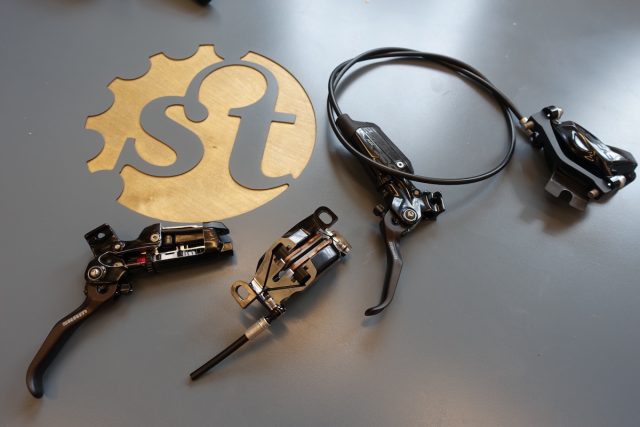
As you may have already read, today SRAM releases the all-new Code R & Code RSC disc brakes. Both brakes share the same core design that’s based around a beefy quad-piston calliper and a brand new master cylinder. The RSC adds in some extra adjustability, along with the clever SwingLink that I’ll get to shortly. But otherwise both the Code R and Code RSC are designed as a mega powerful brake for downhill and enduro riding.
You can loosely think of the new Code brakes as a chunked up version of the Guide brakes, which also use a quad-piston calliper and a similar lever design. However, there are some key differences that separate the performance between the two brakes.
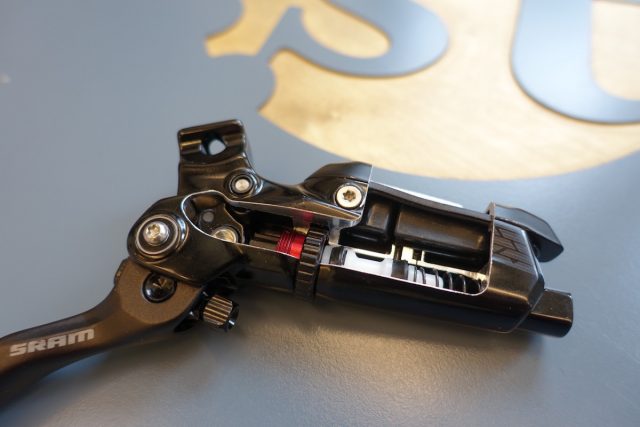
For a start, that lever is much, much bigger than the current Guide lever. SRAM has given the Code lever what it calls a ‘Piggyback Reservoir’, kind of like what you’d see on a downhill rear shock that uses an external reservoir for the oil damper. In the case of the Code lever, this bigger reservoir provides 30% more fluid volume, and it also has an expanding bladder (that’s the black rubber bit in the above photo).
During hard braking on long descents, brakes get hot, and that heat often transfers into the hydraulic fluid. With the larger reservoir and expandable bladder, SRAM has greatly increased the Code lever’s ability to remain firm and consistent from the top to the bottom of the mountain.
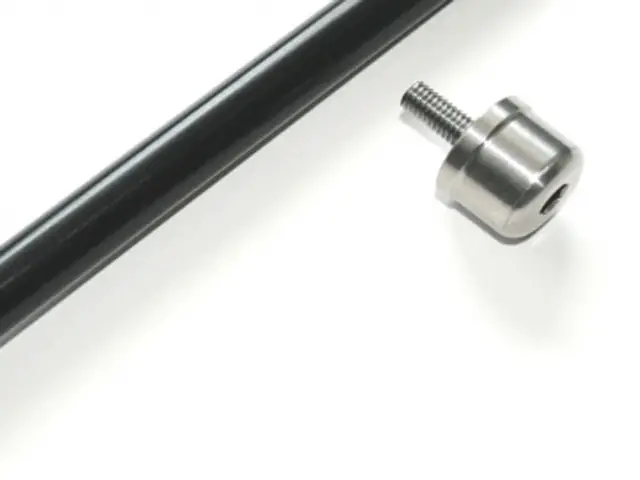
Otherwise the guts are very similar to what you’ll find in the Guide and Level brake levers, with an in-line master cylinder and timing port closure in place of the old Taperbore design used in older Avid models.
In the above image, you’ll be able to make out the Contact Point Adjuster, which is the black dial that sits just in front of the red piece on the piston. The Contact Point Adjuster is only available on the Code RSC brake, and it allows for quick external adjustment of the point during the lever stroke at which the pads engage. It does this by shifting the position of the main U-cup seal (that’s the black rubber seal just to the left of the return spring) and it’s position relative to the timing port closure (that’s the tiny machined hole that connects the oil reservoir to the master cylinder.
Want the brake levers to provide minimal throw before the brake pads engage the rotor? Wind that dial in to reduce the distance between the U-cup seal and the timing port. Prefer a nice long lever throw? Then crank the dial back out to increase the distance between the U-cup seal and the timing port.
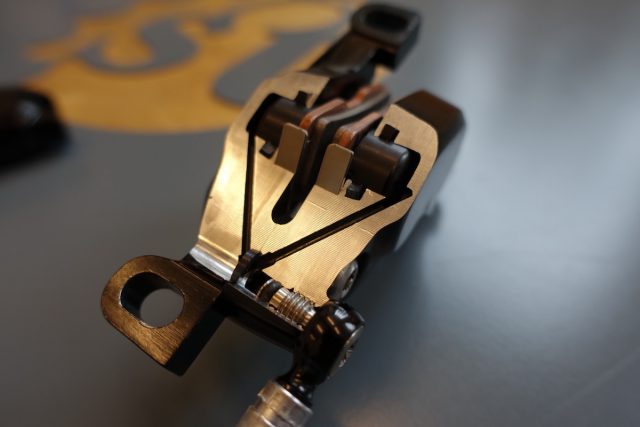
At the business end of the new Code brakes is a new quad-piston calliper. The Code calliper employs four pistons, with the leading edge using 16mm diameter pistons, and the trailing edge using 15mm diameter pistons. That’s compared with 14/16mm diameter pistons used in the Guide brake callipers. The dual-diameter piston design is employed for modulation purposes, and the effect is like adjusting your rim brake pads to toe-in at the front so that the pad surface doesn’t engage the braking track all in the one hit, but rather in a progressive manner that slowly increases braking force the more you pull on the lever.
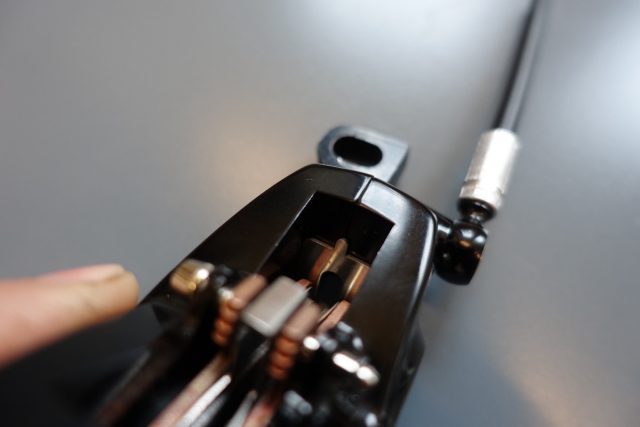
SRAM has updated the Code calliper to be compatible with the new Bleeding Edge tool that uses a clever syringe needle that offers a push-then-click mounting design for faster and easier bleeding. It’s a design we have plenty of experience with, and we can confirm that not only does it work, it works darn well.
Internally, the tunnels that the oil moves though have been reworked for more consistent flow, while decreasing the chance of air becoming stuck inside. Also drawn from the new S4 calliper found on the Guide Ultimate brakes is the use of a stainless steel heat shield that sits between the pads and the calliper body. Under hard and heavy braking, this stainless steel plate sucks heat away from the pads, reducing the chance of that heat affecting the oil inside the brake itself.
But enough of all that – what are the brakes actually like for…err…braking?

On The Trail
In short, the Code RSC disc brakes just feel like a more powerful Guide RSC brake. And that’s a very good thing. The lever blade is identical, with a lovely curved face and a slightly hooked end that suits single-finger braking well. Action is light, and the overall stroke is smooth thanks to a sealed cartridge bearing pivot.
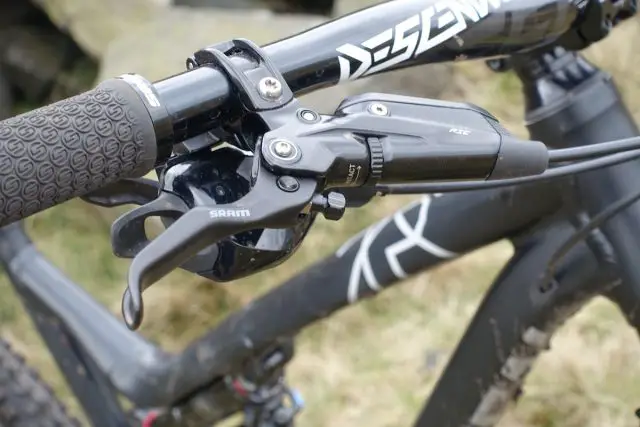
The RSC levers offer plenty of adjustability, with a tools-free reach adjuster dial allowing for quick and easy setup of the distance between the grip and the lever. And just like the Guide RSC and Guide Ultimate brakes, the Contact Point Adjust dial delivers a good range of adjustment for the amount of dead stroke before the levers engage.
On all test bikes, I run my levers quite close in (I HAVE SMALL HANDS OK), with the lever blades positioned 58-60mm out from the grip. As such, the less lever movement before the pads engage, the better. So on the Code RSC brakes, I made the post of the Contact Point Adjust by winding the dial all the way in to minimise the available dead stroke.
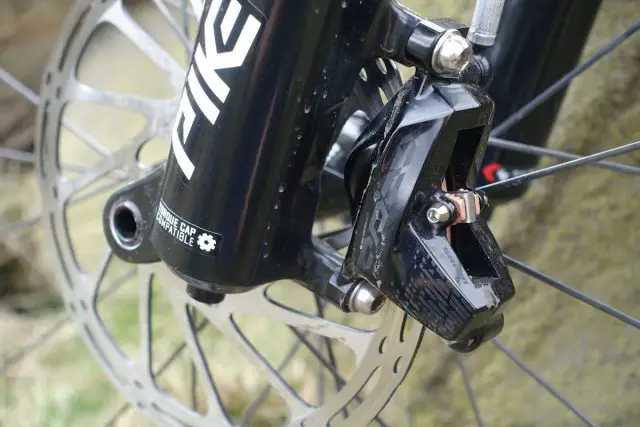
Power-wise, the Code brakes don’t feel drastically different to the Guides initially. You can feather the brakes for gentle speed management on loose off-camber corners, and it never feels like you’re going to accidentally lock up a tyre and break traction. As you plunge deeper into the lever stroke though, the power ramps up significantly and comes on hard and fast, and it’s here where the Code brakes separate from the existing Guides.
While our local test loop didn’t exactly push the Code brakes to its limits, there were definite moments where the quad-piston’s raw power became very evident, and that led to a whole load of confidence when dropping down ugly rutted and boulder-filled descents. That added power and control will be particularly useful for heavier riders and those on bikes with suspension travel beyond 150mm.

Overall
In terms of braking feel, SRAM has successfully brought over the ergonomics pioneered in the Guide brakes, while pumping up the power levels to what riders can expect of a full-blown downhill brake. What’s impressive about the Code though is that it delivers gobs of power for proper alpine schralping, while maintaining that fine-tune modulation that has made SRAM’s latest disc brakes so good. Is it overkill for regular trail riding? Probably, but because it doesn’t feel like a humongous DH brake that’s either on or off, so it does well to blur the lines.
If you’re a downhiller, a heavy rider, or simply someone who spends a lot of time riding in the alps, then the SRAM Code brakes will be a very appealing option. We’ll need more time on the brakes in more environments to make definitive comments on durability and ongoing reliability, but with similar architecture to the current Guide and Level brakes, we have little to worry about here.
Review Info
| Brand: | SRAM |
| Product: | Code RSC Disc Brakes |
| From: | SRAM, sram.com |
| Price: | £229 per end |
| Tested: | by Wil for |

